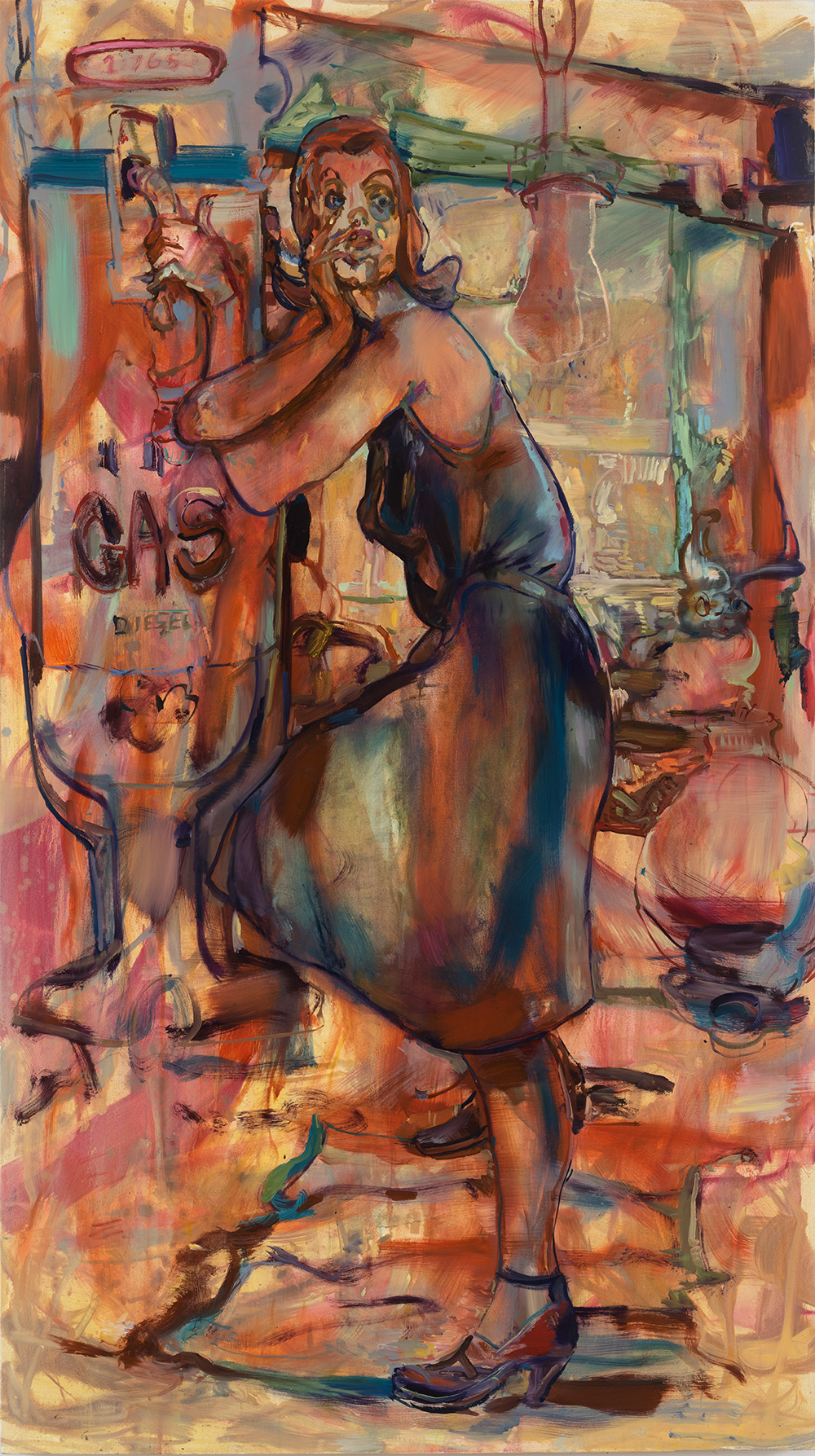I’ve always imagined Angela Dufresne as an essentially cinematic artist whose high-concept films end up expressed as series of painted works on canvas. It’s as if she went directly from film school to a major film production in trouble, where the executives have planted her in the guise of an art director to save the picture and bring it in at a number that won’t bankrupt the studio. Picture and studio go down in flames anyway, but in the meantime, Dufresne’s series of concept/composite shot sketches for the director and DP have essentially become their own fantastical movie.
Once upon a time I would have thought Dufresne might actually team up in such a fashion with a director like, say, Robert Altman or Werner Herzog; and to my astonishment her current show is actually informed and inspired in part by another film-making Werner—Werner Schroeter, a German film (also opera) director, active in the 1970s and 1980s, who influenced filmmakers including Herzog himself. The exhibition title is drawn from a line uttered by the iconic Magdalena Montezuma (who appeared in most of Schroeter’s films) in Eika Katappa (Scattered Pictures, 1969), and it speaks to the desperation all around us at this tipping point moment.

Angela Dufresne, Werner and Circe Turn Some Mediocre Assholes, 2022, oil on canvas, 11 x 14 inches. Image courtesy of the artist and M+B.
Dufresne is in fact a painter of “composite shots”—except that she usually adds more than subtracts from what becomes the finished painting. The title work, Life is very precious, even right now (all works 2022), exemplifies Dufresne’s approach and technical range. She’s simultaneously operatic and Altman-esque here in a scene focused on human figures begging, imploring or invoking some presumably cosmic force, while other figures variously look on with anger, concern or curiosity, walk away, or converse amongst themselves. The background elements—like green islands floating in an amorphous glacial sea churned out of something between Nolde, abstract (or German) expressionism, and Italian trecento painting—seem both suspended and in motion, a scrim to dissolve within moments. Even a supporting actor’s dog seems to be looking for another picture to sign onto. It’s a Sondheim moment in an Altman—I mean Schroeter—I mean Dufresne film—I mean painting. “Stop worrying …just move on.”
Which might just be a theme of the show. Past a master shot (e.g., Willow Springs Odyssey, or How Circe Is What the West Needs—luminous with topaz yellows and amethyst purples), the scenes get rewritten, and the shots recomposed seemingly continuously; she’s not afraid to “tear up the script”—and the set with it, or simply turn her movie into an opera. Complex underpainting may be interrupted or obliterated by a bold swath of lavender, pink, red or umber; e.g., Werner and Circe Turn Some Mediocre Assholes (to make room for a “Supervixen” or two). A complex chromatic scheme frequently evolves into something more monochromatic—which doesn’t remotely dampen the drama. Consider the pretzel-logic choreography of Magdalena Pumping the Gas That Isn’t There floating above its complicated underpainting. (Is there such a thing as apocalypse-realism?)
Our relationships to places are fickle at both ends, and we look to our seers and sorcerers to navigate our way through them. Dufresne explodes the mythography of that fraught transit with this devastating and luminous show.


